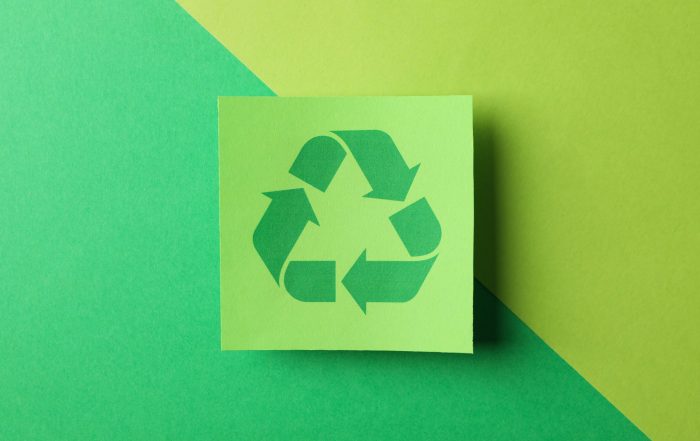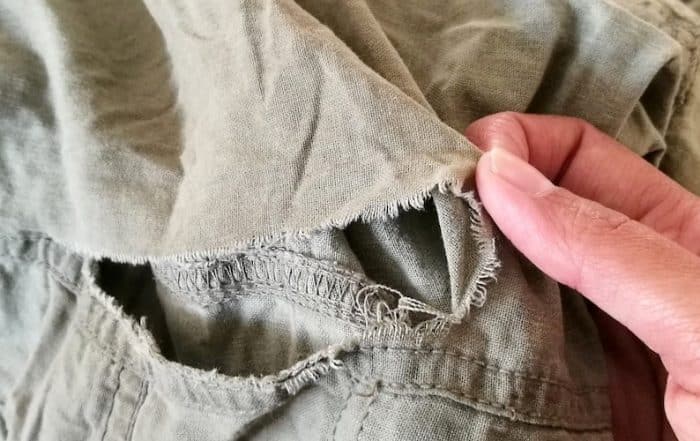Patagonia wil meer kledingreparaties via United Repair Centre
In het United Repair Centre in Amsterdam repareren mensen met een vluchtelingenachtergrond kleding van onder meer Patagonia. Als het aan deze initiatiefnemer én klant ligt, sluiten zich snel nog meer merken aan. Willem Swager: “Je kunt reparatie zien als kostenpost, maar het is veel interessanter om het te zien als een uniek contactmoment met je klant.”
Door een kledingstuk te repareren kan het nog jaren mee en hoeft er geen nieuw product te worden aangeschaft. Precies daarom zit reparatie ook in het dna van kledingmerk Patagonia. Oprichter Yvon Chouinard leerde zichzelf in de jaren vijftig ijzersmeden om klimgereedschap te kunnen repareren en hergebruiken. De klanten van het kledingmerk dat hij later oprichtte kunnen nu al bijna 50 jaar hun Patagonia-producten meestal gratis laten repareren. Zo verzorgde het bedrijf vorig jaar alleen al in Europa meer dan 13.000 reparaties.
Willem Swager is financieel en operationeel directeur Europa en namens Patagonia lid van de Network Council van Amsterdam Economic Board en van de stuurgroep die gaat over de Green Deal Circulair Textiel in de Metropool Amsterdam. Het merk groeit in Europa. Net als de behoefte aan meer reparatiecapaciteit. Swager voelde daarnaast een behoefte aan meer regionale binding. Twee jaar geleden opperde hij daarom het idee voor een regionaal reparatiecentrum bij een van de rondetafelgesprekken die Amsterdam Economic Board organiseerde over circulair textiel. Verschillende organisaties haakten hier op aan en zo werd een reparatie shared service centrum een deelinitiatief van de regionale Green Deal.
Met MakersUnite werkte Patagonia en verschillende andere organisaties sindsdien aan het opzetten van het United Repair Centre (URC), dat 1 juli officieel haar deuren opende. Het URC blijft onderdeel van de Green Deal Circulair Textiel, waarin bedrijven, overheden en kennisinstellingen uit de Metropool Amsterdam in verschillende deelinitiatieven werken aan een circulaire toekomst voor textiel in de regio.
De juiste mensen
De sociale onderneming MakersUnite zorgde voor de juiste mensen voor het URC, veelal werknemers met een vluchtelingenstatus. Patagonia deelde kennis en ervaring vanuit reparatiecentra in onder meer Frankrijk en Portugal. “Als merk zelf kleding laten repareren is een behoorlijke operatie”, vertelt Swager. “Je moet vaststellen of iets te repareren is, zorgen voor transport van het kledingstuk en ervoor zorgen dat het uiteindelijk gerepareerd en wel weer bij de klant terecht komt. Daar is fysieke infrastructuur voor nodig, maar ook IT-infrastructuur om alles soepel te laten verlopen.”
Om ook de reisafstand van producten te verkleinen wil Patagonia reparaties zo lokaal mogelijk doen. Daar is massa voor nodig, vandaar dat samenwerking met andere merken in het United Repair Centre belangrijk is. Ook om seizoenspieken op te kunnen vangen. Swager: “Wij zien bijvoorbeeld een paar weken voor het wintersportseizoen en in het zomerseizoen een piek in het aantal reparaties. Maar om stabiel te kunnen opereren, heeft een reparatiecentrum een continue toevoer van kledingstukken nodig.”
Swager brengt het URC dan ook volop onder de aandacht bij andere merken met kantoren in de Metropool Amsterdam. Al heeft groei ook een keerzijde: er zijn dan meer mensen nodig die kleding kunnen repareren. “Sommige reparaties zijn heel technisch, bijvoorbeeld het vervangen van een waterdichte rits”, legt Swager uit. “Je moet echt de juiste vaardigheden hebben om dat goed te kunnen. Daarom is het zo belangrijk dat onderwijsinstellingen ook zijn aangehaakt, zij moeten hier meer mensen voor gaan opleiden.”
Reparatie als kans
Voor veel merken is reparatie aanbieden nog nieuw, eng en ze zien het voornamelijk als kostenpost. “Dat kan, maar wij zien het juist als uniek contactpunt met je klant”, zegt Swager. “Daarvan zijn er steeds minder, ook omdat we minder gericht kunnen adverteren doordat online het gebruik van cookies aan banden wordt gelegd. Als de klant met een reparatieverzoek naar je toe komt heb je een heel geschikt moment om jouw merk onder de aandacht te brengen. Dat is ook veel waard. Wij spreken soms klanten die al 20 jaar dezelfde jas hebben.” De kosten van reparatie kun je meenemen in de verkoopprijs. Door veelvuldig reparaties uit te voeren, leer je ook van de zwakke plekken in producten en kun je het ontwerp aanpassen.
Als die argumenten nog niet overtuigend genoeg zijn, zijn er wel andere krachten op de markt die merken dwingen over reparatie na te denken. Swager: “Consumenten worden steeds mondiger en gaan meer inzet verlangen van merken. En dan zijn er nog Europese richtlijnen en de uitgebreide productverantwoordelijkheid voor textiel waar de Nederlandse overheid aan werkt, die de druk op textielproducenten verder vergroten. Je ontkomt er dus niet aan om hierover na te denken.”
Zes keer meer reparaties
Patagonia zelf heeft de ambitie om het aantal reparaties in Europa te verzesvoudigen. De marketingmachine daarvoor moet nog worden aangezet, zegt Swager. “We gaan hier de komende jaren flink gas op geven en zijn al met verschillende andere bedrijven in gesprek die mee willen doen aan deze ‘repair journey’. Want om echt impact te maken, moeten we opschalen.”
Swager hoopt dan ook dat het United Repair Centre over een paar jaar gedragen wordt door meerdere merken: “Ik hoop dat het dan een grote onderneming is waar veel reparaties doorheen gaan en waar heel veel mensen de mogelijkheid krijgen voor een opleiding en/of baan op hun eigen niveau. Als dat zo is, is het United Repair Centre een prachtige showcase voor steden als Berlijn en Milaan waar wij zelf ook actief zijn, maar ook voor bedrijven die reparatie aanbieden nog een spannend concept vinden.”
Tekst: Mirjam Streefkerk
1 juli 2022
Meer weten over
Neem contact op
Blijf jij ook op de hoogte?
8x per jaar nieuws en events uit de regio: schrijf je in voor de Board Update nieuwsbrief
Deel dit artikel
Wil je op de hoogte blijven?
Volg ons dagelijks op LinkedIn en schrijf je in voor de Board Update nieuwsbrief.
Lees ook deze berichten
- Een nieuwe lichting gedreven jongeren is aangetreden bij Young on Board, de ...
- Met de selectie van vier kanshebbers is de regionale voorronde van de ...
- Met meer dan 80 ondernemers, 40 investeerders en diverse dienstverleners bood LSH Capital Match ...




